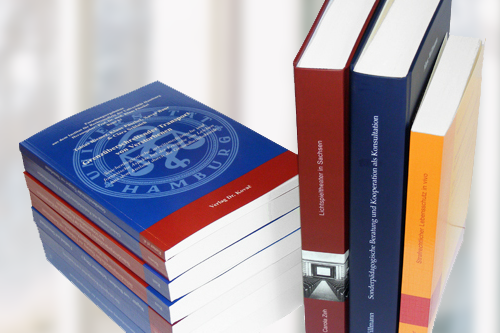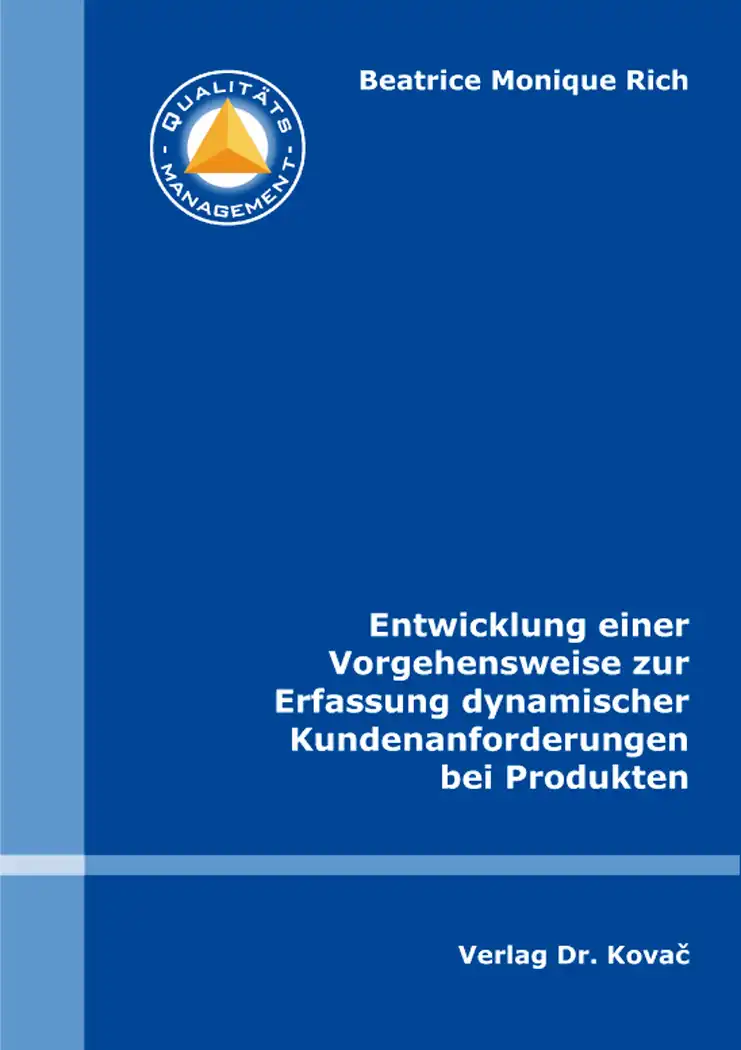Beatrice Monique RichEntwicklung einer Vorgehensweise zur Erfassung dynamischer Kundenanforderungen bei Produkten
Cottbuser Schriften zum Qualitätsmanagement, volume 8
Hamburg 2023, 248 pages
ISBN 978-3-339-13564-3 (print) |ISBN 978-3-339-13565-0 (eBook)
About this book englishenglish
In the doctoral thesis, the challenge of the customer's quality acceptance is addressed against the background of temporally changing requirements.
Customer requirements and the associated quality judgment of customers are subject to constant change due to continuous learning processes. For this reason, the question of the validity of quality standards arises, particularly in the case of long-lived products. Although the constant change is visible, it is nevertheless difficult to specifically identify the dynamics.
The problem is first answered in the paper on the model level. Based on a model comparison, a model is developed to describe the dynamics of customer requirements for products (the Rich model). Furthermore a procedure for the collection of changing customer requirements is derived, with which the shifted quality yardsticks can be identified. The starting point is the product audit, where internal quality benchmarks are compared with external customer requirements. The step-by-step guide and the templates that have been created round off the procedure and make it applicable in practice.
With the procedure for recording changing customer requirements, the benchmarks of different target groups can be identified, the perception of quality can be measured, and the customer can be integrated into the process. In addition, a cost-benefit comparison is made by addressing the question: Am I testing more than the customer actually sees? By asking the question and applying the approach, a company focuses on the continuous improvement process and promotes cross-departmental working.
Supplementary investigations in the field of product audits showed that product audits will continue to be carried out from the customer's point of view in the future, and that the use of machines will support humans in auditing but will not replace them. In terms of profitability, it is becoming increasingly important for companies to focus on the (constantly changing) customer-relevant imperfections.
Keywords
AnforderungsmanagementAutomobilindustrieDynamikKundenanforderungenPerceived QualityProduktauditQualitätsmanagementQualitätsmaßstäbeQualitätswahrnehmungRich-ModellSubjektive WahrnehmungUnvollkommenheitWirtschaftsingenieurwesenIhr Werk im Verlag Dr. Kovač

Möchten Sie Ihre wissenschaftliche Arbeit publizieren? Erfahren Sie mehr über unsere günstigen Konditionen und unseren Service für Autorinnen und Autoren.
